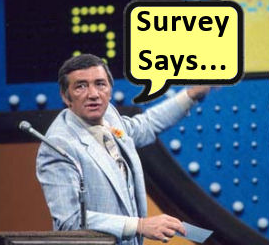5 Essential Tips to Ensure Survey Completion
Yesterday I received an email from a local company that wanted me to take a quick 2-minute survey to help them improve. The idea itself is a good one; however, the execution of the survey was not so great. If you want to leverage the power of surveys, here are 5 essential tips to ensure people complete your surveys.
1. Proof Read
While normally I am all about the survey design and developing questions that produce unbiased results, I have to say that after reading this survey, someone should have proofread it. In some cases, there were missing words. In one specific question, I really didn’t know what they were looking for. That is not good for a survey.
In at least one other case, the grammar was just a wee bit off, which meant that I read the sentence several times. Not that it didn’t makes sense, it did, but it was just odd.
Key Take-away: We all make mistakes. If possible we should always try to have another set of eyes cross our surveys.
2. Have a Clearly Defined Purpose
This may sound like common sense, but when designing a survey first think about its purpose. What information do you want to learn or confirm? Are there themes? How many themes? Do any of these themes have a correlation?
If you have more than three themes, it might be prudent to break your survey into different surveys. For example, the survey that I referenced above had a number of different things that they were looking for. It appeared to be a hodgepodge of questions. As a Marketing Practitioner, I couldn’t help but “try” to determine what it was “exactly” the organization wanted or needed. As a customer, I found the questions to be random and lacking clarity. I don’t believe that this survey was tested for clarity or usability.
Key Take-away: If you feel that you can’t afford an experienced marketing professional (but really can you afford to not have one?), really think about your purpose and the logical sequence. Seek a couple of people whose opinion you trust and ask them to take the survey and give feedback. This can save a lot of time and frustration, not to mention money.
3. Use Proper Question Techniques
To get good responses, there are a few techniques to use.
- First and foremost is language. Be clear, concise and use words that have fewer interpretations.
- Avoid leading questions.
- Consider alternative ways to ask the question.
If using a scale, make sure it is meaningful. For example, “Please rate your satisfaction with the speed of the application. On a scale where 5 means ‘Very Satisfied’ and 1 means ‘Very Dissatisfied.”
Key Take-away: Using best practices for question development will help you get better intelligence AND make it easier for your respondents.
4. Don’t Spam People
As a Marketing Practitioner I truly value customer insight and I love…love..love data. As an individual, I am inundated with email. Some email are completely my doing as a result of signing up for various news services. Other email however, are completely unsolicited and unwanted. As a customer of this organization that sent the survey, I don’t recall signing up for email. Not saying that I didn’t agree to it at some point, but I sincerely do not recall.
I was a little surprised to receive the email asking me to do the survey. As I follow this company on Twitter, it would have been nice to see a pre-notice there. Or, the link in a Tweet inviting customers to participate. They did not do this. I think that this is a miss on two fronts. First, they are not offering the feedback process to all of their customers. While sample surveys are important, there are also times when you want great customer feedback. In this case they were looking for market development information. The second miss is on the missed opportunity to give a heads up to people about the survey.
Key Take-away: Think about how you will give advance notice of the survey along with how you will minimize spam. Your customers will love you!
5. Be Up Front about the Time Commitment
People are busy. So, being up front with the time commitment will increase your chances of completion versus abandonment. Of course it is always best to keep surveys as short as possible, but when that is not possible, being up front will be truly appreciated.
Key Take-away: Acknowledging time commitments increases the probability that people will compete the survey once started. Surveys that consume a lot of time without an upfront warning increase the probability of abandonment.
Want to learn more? Feel free to sign up for our newsletter at TaylorMade Solutions (insert “newsletter” into inquiry box)



Leave a Reply
Want to join the discussion?Feel free to contribute!